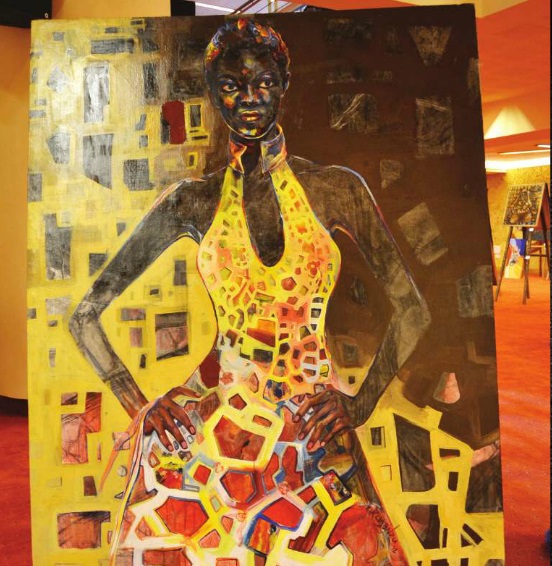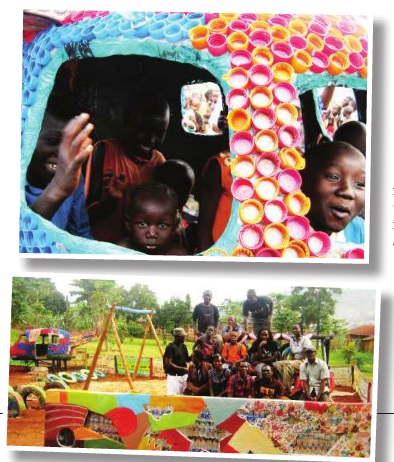
Turning landscapes into canvas
Bruno Ruganzu started out as a struggling artist about 10 years ago. His goal was to etch a mark on the patronage in order to survive. Starting out by painting on canvas, he made art that had marks of his ambition. But his turning point came when he decided to take a path that few local artists were familiar with – eco-art. He took his tools and ideas from the studio and turned the landscape into his canvas, making colourful impressions that also had many functional elements, writes Nathan Kiwere.
In one of his achievements he turned a muddled courtyard of a small primary school in the Kireka suburb of Kampala city into a fun park using recycled materials such as mineral water bottles, straws, bottle-tops, car tyres and a plethora of disposable trash and scrap.
This artistic feat attracted the attention of local and foreign media including a special feature on the American-based international TV channel, CNN. With this came an avalanche of opportunities that saw him turn from a humble artist trying to make a difference into a glob-trotter with special invites to artistic events, competitions, and awards. It was a worthy reward for daring to go where no one had dared before and lifting the barriers of artistic expression.

Ruganzu is credited with introducing eco-art in Uganda but he did not conceive it from scratch as it is a fresh movement led by artists all over the world seeking to explore, address and heal humanity’s relationship with nature.
Their work has an agenda; it is activist and can make a difference. In this art, nature is the medium, both conceptually and physically. Through their creative process and work, they stimulate dialogues, spark imagination and contribute to the socio-cultural transformation towards the environment. During the official launch of Ruganzu’s work in Kireka some three years ago, for example, the artwork became like a bonfire around which people from all walks of life gathered to talk about all manner of issues ranging from hygiene, environment to politics.
Eco-art is an example of new artistic expression that transcends the basic tenets of formalism or how objects look. It is about stretching the limits of the universal principles of aesthetics that were popular in the second half of the 20th century.
Eco-art interprets nature, creating artworks that inform us about nature and its processes, or about environmental problems we face. In the words of world renowned eco-artist James Guy, eco-artists re-insert the body into nature, seeking to reestablish man as part of nature. He argues that leisure is often sedentary and indoor. Nature has become an abstract concept; something that we see through the car window.
Society has become disconnected from nature – the very source of life. As the cultural disconnection from nature continues to develop, it has become imperative that nature in art and art in nature provide a connection to the power and meaning of life.
 The Independent Uganda: You get the Truth we Pay the Price
The Independent Uganda: You get the Truth we Pay the Price


